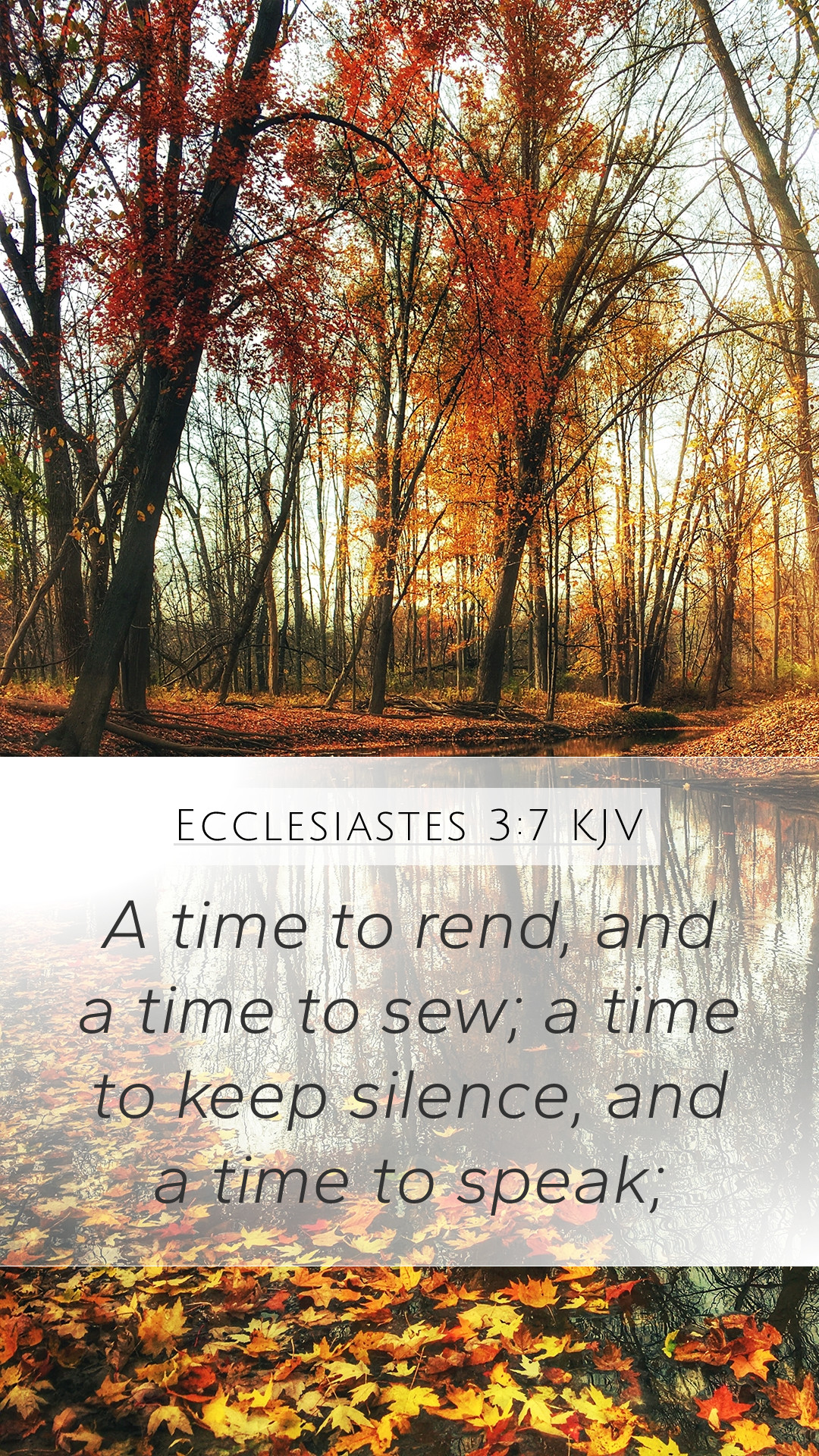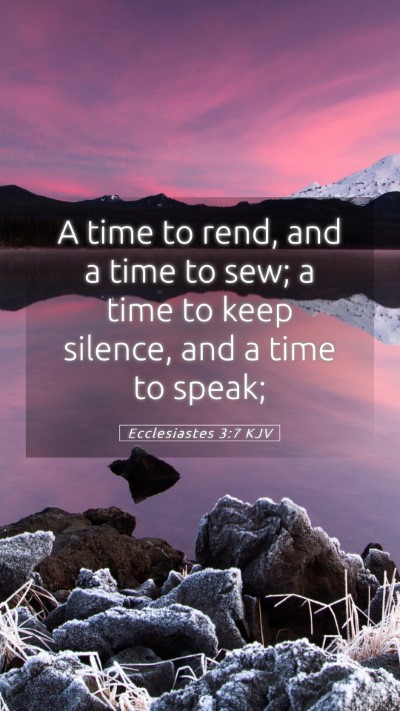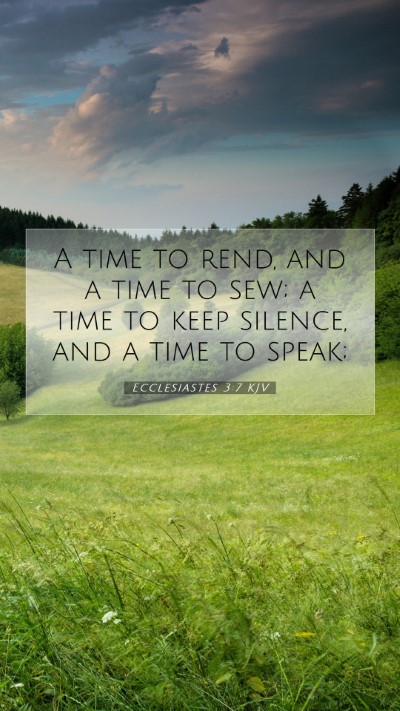Understanding Ecclesiastes 3:7: Commentary and Insights
Ecclesiastes 3:7 states, "A time to tear, and a time to sew; a time to keep silence, and a time to speak." This verse captures the essence of life's seasons and speaks to the broader theme of balance and timing in human experience. Below, we explore its meaning through various perspectives drawn from public domain commentaries.
Context of Ecclesiastes 3
The book of Ecclesiastes reflects on the meaning of life, emphasizing the cyclical nature of time and the inevitability of various experiences. Chapter 3 begins with the famous passage detailing different seasons in life, illustrating that every event has its appropriate moment.
Interpretation of Ecclesiastes 3:7
This verse provides a poignant reflection on the dualities of life. Here are some key interpretations:
- A Time to Tear: This phrase signifies moments of grief, loss, and mourning, where emotional tearing apart becomes necessary. References can be made to Jewish customs of tearing garments in times of mourning (Genesis 37:34).
- A Time to Sew: This suggests healing, restoration, and the act of putting things back together. The metaphorical sewing represents the positive aspect of recovery and rebirth in life.
- A Time to Keep Silence: Silence can be depicted as wisdom, prudence, or contemplation, highlighting the importance of knowing when to refrain from speaking. It emphasizes introspection and the value of listening (Proverbs 17:28).
- A Time to Speak: In contrast, this emphasizes the necessity of communication, advocacy, and expression. There are moments when one must speak out for justice and truth, reflecting the call to action (Proverbs 31:8-9).
Insights from Commentators
Public domain scholars offer profound insights into the layers of meaning behind this verse:
- Matthew Henry: Henry underscores the significance of understanding life's seasons, pointing out that both tearing and sewing are vital to the human experience. He emphasizes the need to align our actions with divine timing.
- Albert Barnes: Barnes focuses on the duality within this verse, advocating that life involves both sorrow and joy. He notes that wisdom lies in recognizing the appropriate moment for each action, allowing God’s providence to guide us.
- Adam Clarke: Clarke elaborates on the contrast between silence and speech, suggesting that each has its purpose. He highlights the importance of discernment in knowing when to engage and when to withdraw, encouraging readers to reflect on their personal experiences.
Practical Application
This verse invites readers to contemplate the rhythm of life. When applied to daily life, it encourages discernment in our responses to various situations. Here are some applications:
- In moments of grief, allow yourself to mourn, recognizing when it's time to tear.
- Seek opportunities for healing and restoration by sewing back together what has been broken.
- Practice silence when the situation calls for reflection, allowing for a deeper understanding.
- Engage in meaningful discourse when issues arise that require your voice and perspective.
Cross References
Ecclesiastes 3:7 resonates with several other biblical passages, including:
- Ecclesiastes 7:14 - Discussing the balance in life's fortunes.
- James 1:19 - Highlighting the importance of being quick to listen and slow to speak.
- Proverbs 25:11 - Advocacy for timely words that offer wisdom and healing.
Conclusion
Ecclesiastes 3:7 is a powerful reminder of the moments that shape our lives. Understanding its implications through scripture analysis and biblical exegesis enables us to embrace both the joys and sorrows inherent in existence. It serves as a guide for personal reflection and a framework for navigating life's complexities with grace and discernment.


